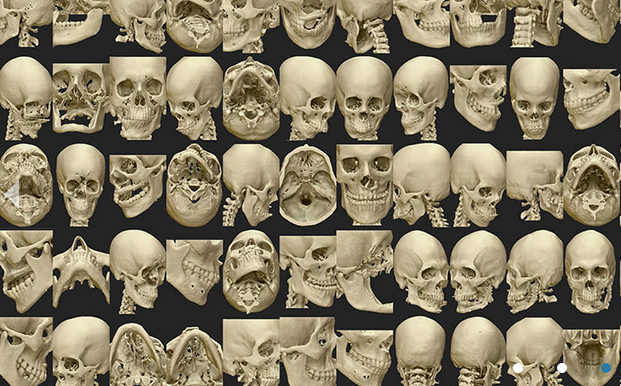There are many companies dedicated to improving the use of 3D printing in the medical sector, and one of them Osteo3D, just released an amazing online repository of medical 3D models. Of course, patient information is private, so some of the “live models” have been made anonymous. But there are now over 100 3D models available to doctors and other registered medical professionals online, which allows them t0 compare their own patient’s 3D files with Osteo3D models. In fact, they can 3D print these models at home or wherever they have access to a 3D printer
But, if a doctor or medical student doesn’t have a 3D printer, they can order a print directly from Osteo3D. The online platform is powered by cloud printing site df3d and is meant to increase awareness of the usefulness of 3D printing among healthcare professionals. Osteo3D hopes that, by collaborating with healthcare professionals, the tech industry, and academic institutions, they will help facilitate access and lower costs for the use of 3D printing in the healthcare field.
Currently the models are divided into the following categories:
- Head and neck
- Spine
- Chest
- Abdomen and pelvis
- Extremities
When you click on 3D view, you don’t get quite the same level of control and depth as Sketchfab, and some of the models look like pixels are growing out of them, but I didn’t pay to download any of the models, so I can’t say for sure. They are currently on the lookout for 3D printing partners who can help them deliver these 3D prints from their cloud platform to their customers around the world.
We’ve covered a number of stories that revolve around the combination of scanning/sensing technologies, great 3D modeling software, and 3D printing. This combination has arguably had the most impact on the quality of human life as it is seen in the medical sector. Diagnoses are made to a patient with a life-threatening condition. Doctors, then, use 3D scanning technology to capture the reality data of a patient’s affected area, whether it be an organ, vasculature, bone structure, or combination of all three. Next, a 3D model is created and manipulated using innovative software, and the model is 3D printed. Surgery is practiced and visualized on the model, and then performed on the patient. After doctors have all of this information, they use it to teach other doctors and nurse practitioners. So, why not spread this wealth of information? This is digital information, after all. Any 3D model that is successfully used to print a 3D model of a diagnosed patient can be transferred anywhere, to anyone.




